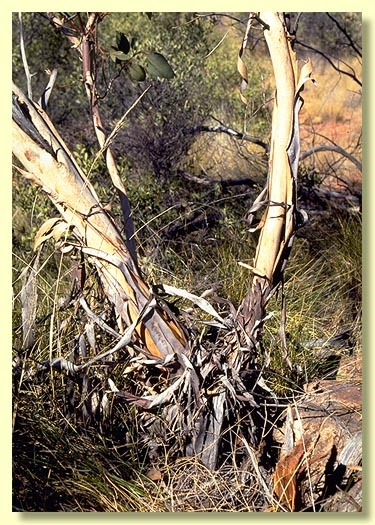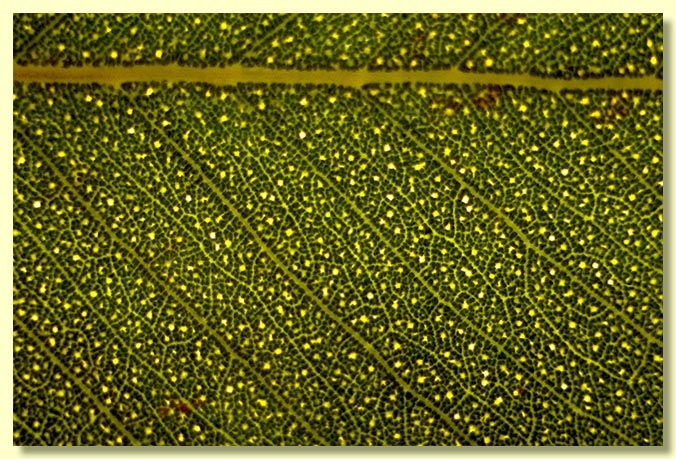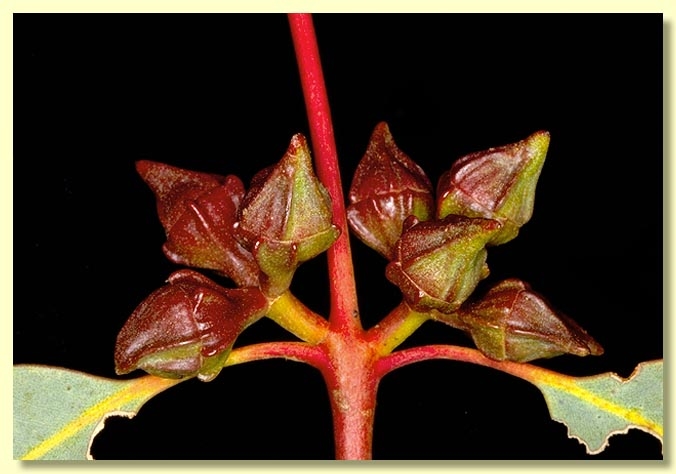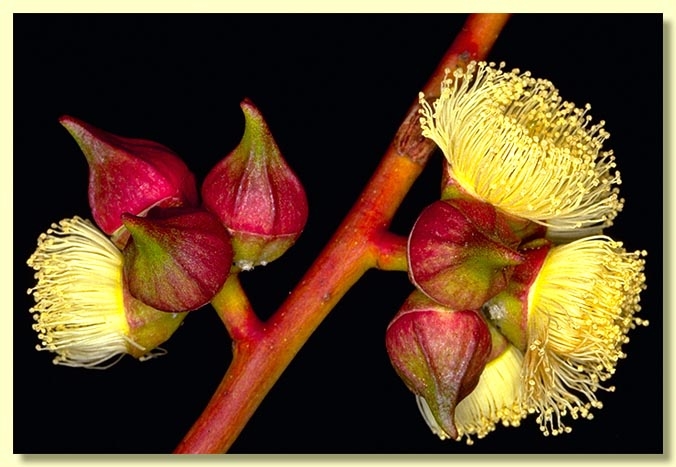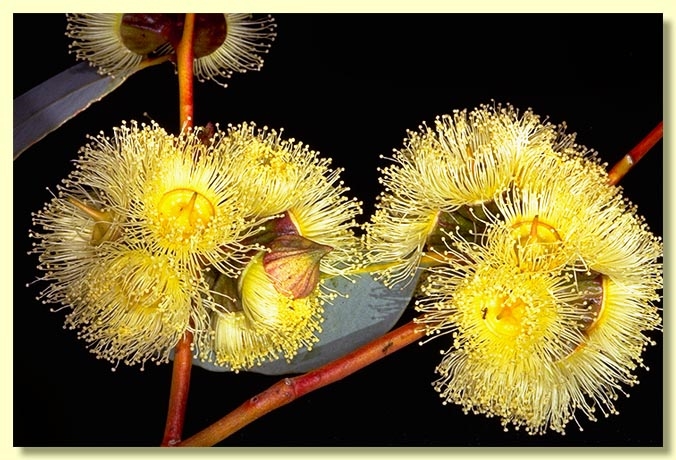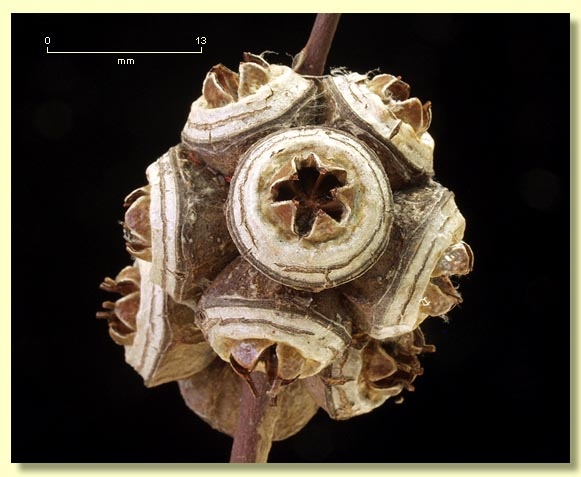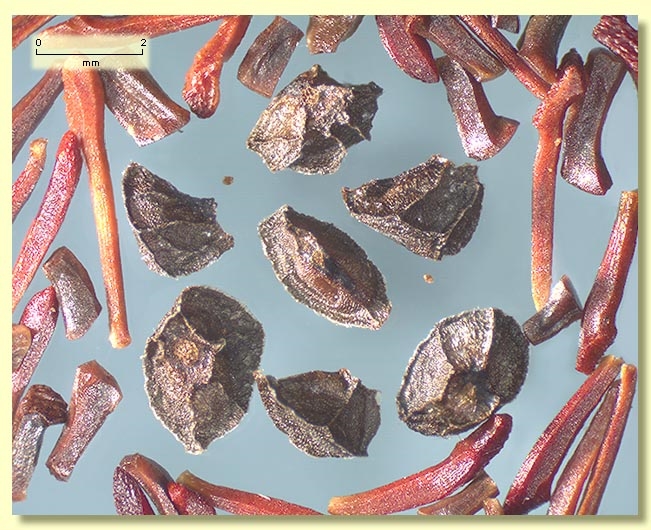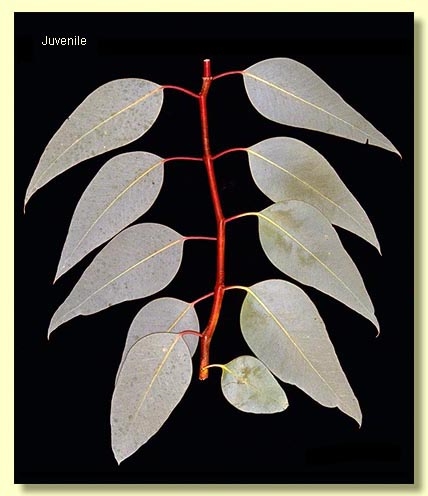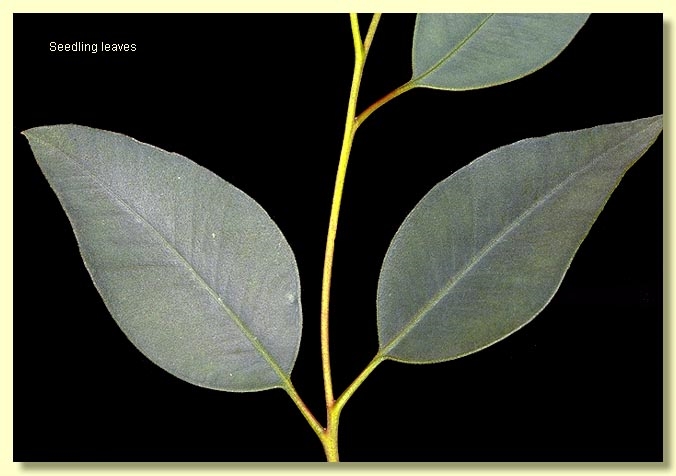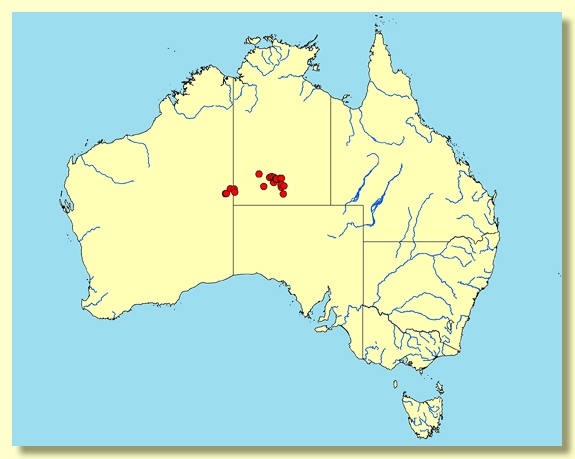Euclid - Online edition
Eucalyptus sessilis
Eucalyptus | Symphyomyrtus | Bisectae | Destitutae | Curviptera | Xylocarpae
Mallee to 5 m tall. Forming a lignotuber.
Bark smooth throughout or partly rough with imperfectly shed ribbons or long strips only at the base of stems. Smooth bark creamy white to pinkish grey or light brown.
Branchlets lack oil glands in the pith; non-glaucous.
Juvenile growth (coppice or field seedlings to 50 cm): stems rounded in cross-section; juvenile leaves always petiolate, opposite only for one or two nodes then alternate, ovate to broadly lanceolate, 12–16 cm long, 5–6 cm wide, base rounded to tapering, green to grey-green, dull.
Adult leaves alternate, petioles 1.7–4.2 cm long; blade lanceolate to ovate or elliptical, 6–15 cm long, 1.7–6.2 cm wide, base rounded to tapering, apex pointed, concolorous, dull, green to grey-green, side-veins at a wide angle to the midrib, rarely acute, reticulation dense to very dense and broken, intramarginal vein present close to margin, oil glands mostly intersectional.
Inflorescence axillary, held erect, peduncles stout, terete to angular, 0.4–1 cm long, buds in 7s, sessile or with pedicels to 0.4 cm long. Mature buds ovoid to globular (1.8–2.5 cm long, 1–1.6 cm wide), with about 5–7 longitudinal ribs, claret-coloured, scar present, operculum beaked (1.3–1.6 cm long), stamens obliquely arranged or the outer erect and the inner slightly inflexed, anthers cuboid, dehiscing by longitudinal slits, style long, erect, stigma tapering, locules 4, the placentae each with 8 or 10 vertical ovule rows. Flowers yellow.
Fruit sessile or occasionally shortly pedicellate, pedicels 0–0.4 cm long, hemispherical, 0.6–1.3 cm long, 1.3–2.3 cm wide, only slightly ribbed, disc raised, concave or oblique, valves 4, exserted.
Seeds grey-brown to blackish, 2–4 mm long, flattened-pyramidal or truncate to cuboid, dorsal surface scarcely reticulate, sides ribbed, encircling narrow marginal flange present or absent, hilum terminal or ventral.
Cultivated seedlings (measured at ca node 10): cotyledons bisected (Y-shaped); stems rounded in cross-section; leaves always petiolate (petioles to 2 cm), opposite for 5 to 7 nodes then becoming alternate, ovate to lanceolate, 7–11 cm long, 2–4 cm wide, base rounded to tapering, apex pointed, dull green.
Flowering has been recorded in March, May, June and July.
Has potential as an ornamental in arid areas.
A mallee found in southern Northern Territory, restricted to the rocky ranges south and west of Alice Springs, e.g. Mt Sonder, Heavitree Range, Krichauff Range, Waterhouse Range, ranges around Palm Valley, extending into Western Australia to the Rawlinson Ranges and Walter James Range. It is usually smooth-barked although larger specimens may retain a basal stocking of rough bark, and has large dull, green to grey-green leaves and claret-coloured buds in seven per umbel.
Eucalyptus sessilis belongs in Eucalyptus subgenus Symphyomyrtus section Bisectae subsection Destitutae because the buds have two opercula, cotyledons are Y-shaped and branchlets lack oil glands in the pith. Within this subsection E. sessilis is one of about 30 closely related species and subspecies in series Curviptera, which is characterised by having large buds in umbels of one, three or seven, stamens erect to oblique in bud, and fruit that are large and have an ascending disc and prominent valves.
Within its natural range it is only likely to be confused with E. pachyphylla, which has very prominently ribbed, green to pink buds in threes. E. sessilis has only slightly ribbed, claret-coloured buds in sevens. Fruit of E. sessilis are hemispherical whilst those of E. pachyphylla are much shallower. E. pachyphylla is usually found on sandy sites. Another related species also found in central Australia is E. oxymitra, which has non-ribbed buds and fruit that are often glaucous.
Eucalyptus sessilis: Latin sessilis, sitting, referring to the buds and fruit sitting close to the body that supports them (lacking a stalk).


